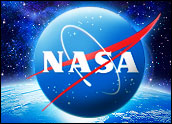
Any science fiction fan or Trekkie knows what tractor beams are — those beams that pull objects toward the device that generates them, sort of like an invisible fishing line and reel.
NASA believes enough in the possibility of creating real tractor beams that it’s provided a US$100,000 grant to researchers at its Goddard Space Flight Center to look into the phenomenon.
The researchers, led by Paul Stysley, will study three experimental methods using laser light to collect samples for analysis.
The team initially planned to use tractor beams to clean up orbital debris but realized that it’s not currently possible to use laser beams to pull relatively massive objects. It decided to focus on sample collection instead.
Making Science Fiction Fact
A research team at Australian National University has used one of the three methods the NASA Goddard scientists will study to move very small particles distances of up to five feet.
Developing a functional tractor beam that can move relatively large objects will require very fine-tuned research, and it’s likely the NASA Goddard study will only point the way to the most likely possibility.
“The laser field is very diverse,” Jay Liebowitz, vice president of sales and marketing at TeraDiode, told TechNewsWorld.
NASA and the Australian National University did not respond to requests for comment by press time.
About NASA Goddard’s Research
The NASA Goddard team will look into three approaches for using lasers to transport particles, single molecules, viruses, ribonucleic acid (RNA) and fully functioning cells to determine which of them is best for sample collection in space.
You can see a clip showing how the technology might be used here.
The three approaches the NASA Goddard researchers will study are the optical vortex method, a method using optical solenoid beams, and using a Bessel beam, a technique that currently is only theoretical.
“This is the tractor beam we’ve been talking about for decades in science fiction,” said Rob Enderle, sci-fi aficionado and principal analyst at the Enderle Group. “It’s science fiction come true.”
Tech Details
The optical vortex method is based on the fact that light can be twisted like a corkscrew around its axis of travel. If you project it onto a flat surface, you’ll see a ring of light with a dark hole in the center. Think of it as a donut of light.
Particles can be trapped in the dark core.
Australian National University researchers have developed a laser beam using this capability to move very small particles up to five feet.
However, this technology can only be used in an environment with an atmosphere.
The second approach NASA Goddard will study uses optical solenoid beams. Properly designed, these can exert forces on objects opposite to the direction of the light beam’s propagation, meaning they can pull objects toward the source of the light beam.
The third technique will use Bessel beams, which are still concepts and have not been created in the lab yet. ABessel beam is a field of electromagnetic, acoustic or gravitational radiation which is non-diffractive, meaning it doesn’t spread out over a distance, unlike light and sound waves. Further, Bessel beams are self-healing, so if they’re partially obstructed at one point, they’ll reform at a point further down their axis.
In theory, a Bessel beam could induce electric and magnetic fields in the path of an object that could pull the object back in the general direction of the source of the beam.
“You can use energy to repel something, so why not use it to attract something?” Enderle asked.
“These experiments are an example of science fiction prototyping, where you use science fiction to come up with ideas that you can then work to make real,” Enderle told TechNewsWorld.





















































